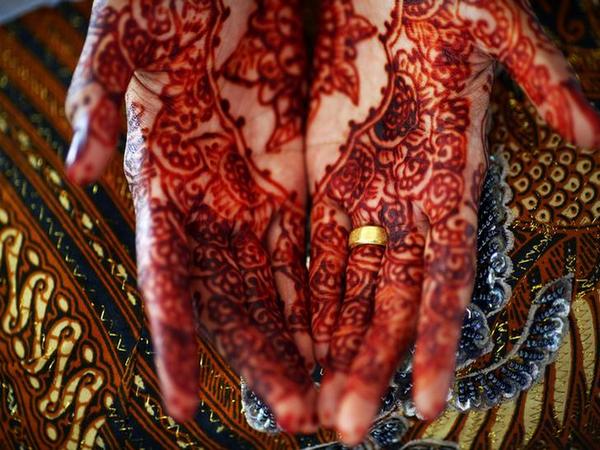
Islamabad: Pakistan has the sixth highest number of child brides globally, with around 19 million girls married before the age of 18. According to Unicef, 18.9 million girls in Pakistan are married before they attain the age of 18 years; 4.6m are wedded before they turn 16 — the legally prescribed age of marriage.
While both boys and girls are married off early in many parts of Pakistan, girls suffer far more than boys in this regard, with many being married off — often to much older men — by their families due to economic stress or senseless custom. The practice largely stems from the prevalence of gender inequality in society and patriarchal cultural norms, and it is further perpetuated due to weak legislation.
This practice is driven by various factors, including poverty, lack of education, and deeply entrenched traditions. But the main problem is that laws related to minimum age of marriage have been ruled as un-Islamic by Pakistan’s Council of Islamic Ideology (CII), which holds that children of any age can get married if they attain puberty.
Child marriage is particularly prevalent in the rural provinces of Pakistan, such as Punjab and Khyber Pakhtunkhwa. In these areas, deeply entrenched traditions and customs, poverty, and lack of access to education contribute significantly to the practice. For instance, in Punjab, low-income households are more likely to marry their daughters off earlier to ease economic burdens. Customs like swara (vani) and watta satta also play a role, where village elders might marry off girls to settle disputes or debts. The devastating floods in 2022 further exacerbated the situation, as economic insecurity led to an increase in child marriages.
The custom of Swara (Vani) in Pakistan has a profound and often devastating impact on children, particularly young girls. Under this practice, girls are given in marriage or servitude to an aggrieved family as compensation to settle disputes, often involving murder. This form of arranged or forced child marriage is decided by a council of tribal elders known as a jirga.
The consequences for the girls involved are severe. Many girls are forced to drop out of school, limiting their future opportunities. Early marriage often leads to early pregnancies, which pose significant health risks for both the mother and the child. Being married off at such a young age can lead to long-term psychological issues, including depression and anxiety.
Currently, the federal law is based around an act passed in 1929, where the age limit for marriage was 14 years and above. It was increased to 16 years by the Muslim Family Laws Ordinance, 1961. The current law sets the legal marriage age at 16 for girls and 18 for boys, setting different and thereby discriminatory marriageable ages for girls and boys.
According to Pakistani Advocate Sahar Bandial, “Decades of lobbying and bona fide legislative attempts in the past to correct this differentiation in the law were almost always thwarted through forceful opposition that labelled such attempts as interference with the religiously prescribed standard to determine readiness of a person for marriage — puberty, which varies greatly between males and females.”
Watta Satta, also known as Shighar, is a practice in Pakistan where families exchange brides. This means that a brother and sister from one family marry a sister and brother from another family. This custom is prevalent in rural areas and is often driven by economic and social pressures. The reciprocal nature of Watta Satta can lead to a cycle of domestic violence, as any mistreatment of one bride can result in retaliation against the other. Watta Satta is particularly prevalent in rural areas of Pakistan, especially in provinces like Punjab and Sindh.
There are several case studies and reports that highlight the plight of child brides in Pakistan. For example, a report by UN Women focuses on the provinces of Punjab and Khyber Pakhtunkhwa, detailing the severe impact of child marriage on girls' health, education, and overall well-being. Another research paper discusses the causes and consequences of child marriages, emphasising the interlinked issues of poverty and lack of education.
The psychological trauma experienced by child brides in Pakistan is profound and multifaceted. These young girls often face severe emotional and mental health challenges. The abrupt transition from childhood to marriage, often accompanied by early pregnancies, can lead to significant stress and anxiety.
Many child brides are cut off from their peers and denied education, leading to feelings of loneliness and hopelessness. Child brides are more vulnerable to domestic violence and abuse, which can result in long-term psychological scars. The physical abuse of child brides in Pakistan is a harrowing issue. These young girls often face severe physical violence, which can lead to long-term physical and psychological harm.
According to reports, child brides are at an elevated risk of sexual and physical abuse, reproductive health complications. They are kept ignorant,socially isolated, and away from family support,and have few future perspectives and little access to economic opportunities. As they are often dependent on their husbands and in-laws, they are unable to speak out against these acts of violence. This increases the risk for child brides of experiencing physical, emotional, and other forms of violence in the home at the hands of their husbands' families and in-laws.
There is a lack of awareness among the public in Pakistan about the damaging effects of child marriages, especially within tribal and feudal societal structures, extreme poverty and illiteracy. Religious beliefs also enable this tradition.